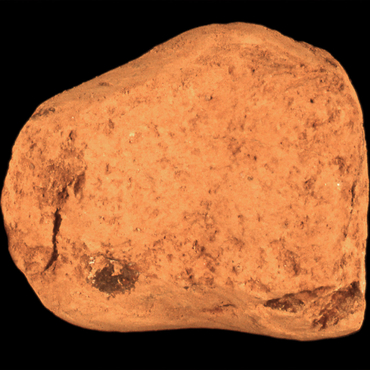
- Home
- Parietal art
- The raw materials
As is true of all other Palaeolithic artists, the Lascaux painters had a relatively limited palette with which to work. Black is present, and a range of warm tones – dark brown, red and yellow – in a very narrow range of variants. Examples of paintings that do not use these colours are quite rare. One exception is provided by one of the "coats of arms" in the Nave, which uses a shade of mauve as part of a checkerboard pattern.
Only pigments of mineral origin have survived to the present day; nevertheless, research has not, up to now, detected the presence of organic colours. The pigments used include oxides of iron and manganese, as well as charcoal. Analysis of these pigments reveals that the red are hematites and the yellows are goethites.
Analyses carried out at La Mouthe in the late 19th century, and the discoveries of Font-de-Gaume in 1901, Lascaux in 1940, Rouffignac in 1956 and Villars in 1958 confirm the mineral origin of the colouring materials. In the region, it is interesting to note that the blacks are always manganese oxide-based. In other regions (Lot, Ardeche and Ariège), charcoal from wood or bones were mostly used instead of manganese oxide.
As it turns out, up until the early 20th century, this manganese could only be found in the département of Perigord. It has been mined for centuries; since at least the 16th century it has been called "Perigord" or "the stone of Perigord". Most beds of manganese are karstic in origin. Manganese partially – and sometimes completely – seals the cavities. These concentrations are sometimes hundreds of cubic metres large. Manganese oxide, trapped in these karstic formations, is unhardened, and can be extracted and transformed without great difficulties.
More rarely, manganese can be found in the banks of the Vézère in the form of small pebbles.


